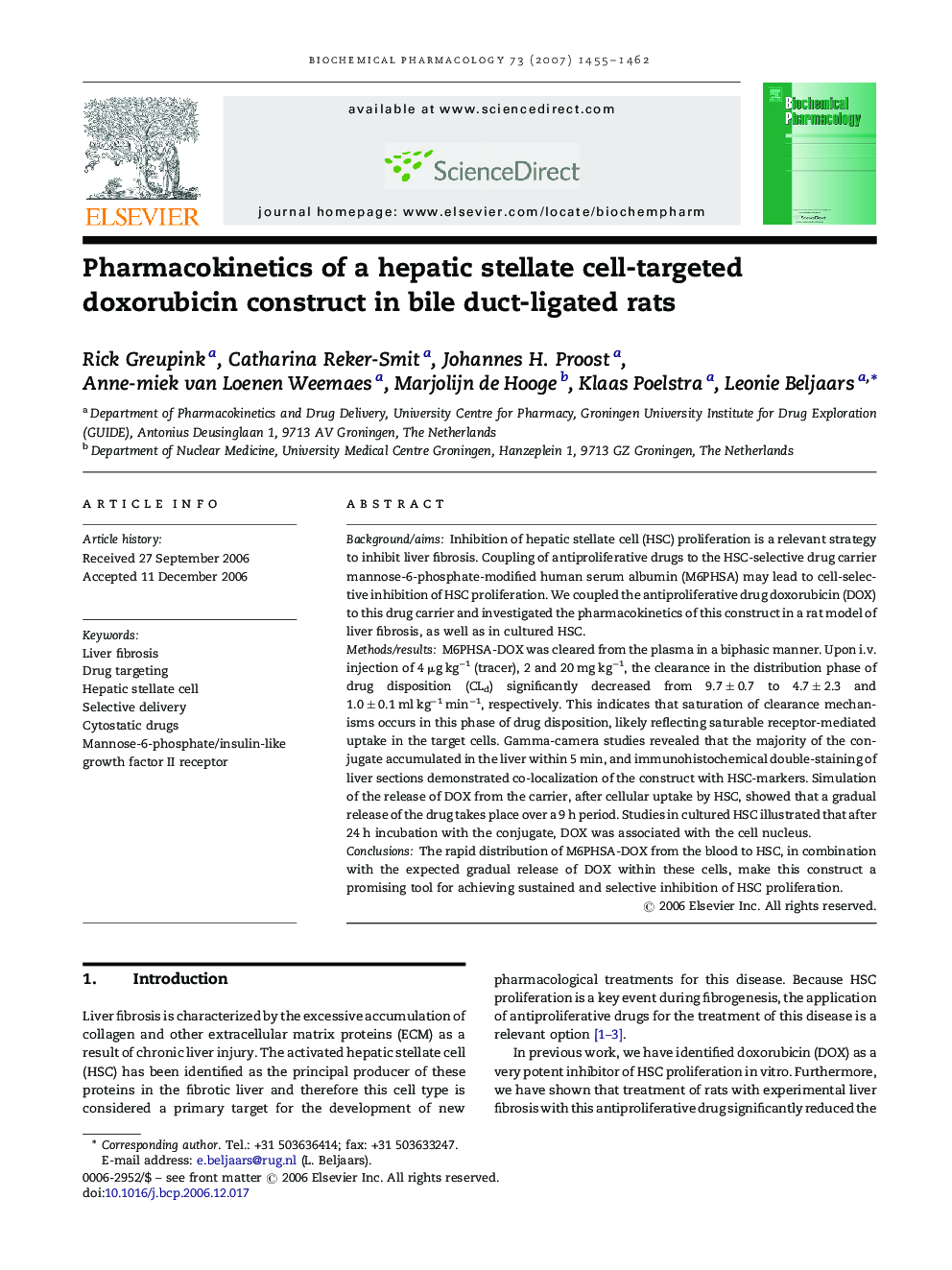| Article ID | Journal | Published Year | Pages | File Type |
|---|---|---|---|---|
| 2515723 | Biochemical Pharmacology | 2007 | 8 Pages |
Background/aimsInhibition of hepatic stellate cell (HSC) proliferation is a relevant strategy to inhibit liver fibrosis. Coupling of antiproliferative drugs to the HSC-selective drug carrier mannose-6-phosphate-modified human serum albumin (M6PHSA) may lead to cell-selective inhibition of HSC proliferation. We coupled the antiproliferative drug doxorubicin (DOX) to this drug carrier and investigated the pharmacokinetics of this construct in a rat model of liver fibrosis, as well as in cultured HSC.Methods/resultsM6PHSA-DOX was cleared from the plasma in a biphasic manner. Upon i.v. injection of 4 μg kg−1 (tracer), 2 and 20 mg kg−1, the clearance in the distribution phase of drug disposition (CLd) significantly decreased from 9.7 ± 0.7 to 4.7 ± 2.3 and 1.0 ± 0.1 ml kg−1 min−1, respectively. This indicates that saturation of clearance mechanisms occurs in this phase of drug disposition, likely reflecting saturable receptor-mediated uptake in the target cells. Gamma-camera studies revealed that the majority of the conjugate accumulated in the liver within 5 min, and immunohistochemical double-staining of liver sections demonstrated co-localization of the construct with HSC-markers. Simulation of the release of DOX from the carrier, after cellular uptake by HSC, showed that a gradual release of the drug takes place over a 9 h period. Studies in cultured HSC illustrated that after 24 h incubation with the conjugate, DOX was associated with the cell nucleus.ConclusionsThe rapid distribution of M6PHSA-DOX from the blood to HSC, in combination with the expected gradual release of DOX within these cells, make this construct a promising tool for achieving sustained and selective inhibition of HSC proliferation.
